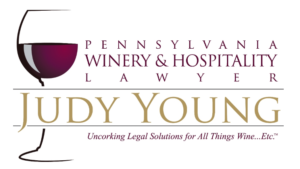Intergenerational Transitions and Succession Planning for Wineries
 What’s Love Got to Do with It?
What’s Love Got to Do with It?
I read an article recently about the family feud taking place at the Korbel Champagne Cellars Winery between father and daughter. Both parties are embroiled in a fight to the finish currently entangled in a defamation lawsuit wherein millions of family dollars are now at stake.
While dysfunctional families can be found in almost any business today, the wine industry is not immune from its fair share of family friction. Family feuds have caused damage to the reputation of some of America’s finest wineries. The battle for power between the Mondavi brothers of the Charles Krug Winery in 1965 or the 1986 trademark infringement suit between the Gallo brothers– Ernest, Julio, and Joseph represent just a few of the scathing yet bitter battles that can go on within a family.
Many of Pennsylvania’s winery and vineyard operations are multi-generational closely held family owned businesses. When the time comes to change hands and hand down a family owned business, family rivalries can ensue. With millions of dollars at stake, it’s easy for love and happiness to take a back seat to sibling rivalry and jealous behaviors. It is not at all unusual for family hostilities to seep into the family business, eroding the united front and focus that makes for a successful business. Building a successful presence in the community should be reflective of a family business that can also transfer leadership for the benefit of continuing the family legacy.
Succession Planning is about the future. When the time comes, carrying the family brand into the future can be the single most critical and difficult challenge a family business has to endure. It can also be an opportunity to reinforce and embody the founder’s mission and core principles long after the business has changed hands.
Looming questions about how to treat the family members equitably, planning for the surviving spouse, and determining who should be at the helm are just a few key decisions to be determined. Oftentimes, these decisions are made in a vacuum by the founder or virtually not at all. This can result in family conflicts and friction later as one heir seeks to retain the business while the other heir seeks to acquire his or her value and move on.
Winery owners who are able to embrace family members in an open dialogue regarding succession planning will stand to be more successful in the future. Thus, you should consider long term succession planning in order to:
- Establish guidelines to define the transition.
- Identify the next generation of leadership for the business.
- Maintain wealth preservation and asset protection for family members.
- Determine timetables for retirement, estate and tax planning purposes.
- Educate the next generation on operational, financial and interpersonal issues.
- Minimize tax liabilities passed down to heirs
The future of your business deserves well executed succession planning. If the founder’s dreams are not the same dreams shared by their heirs, the likelihood is greater that the transitioning winery will end up in the hands of a third party. Prepare for the future. Leave a legacy for the company founder because at the end of the day, love’s got everything to do with it!!

